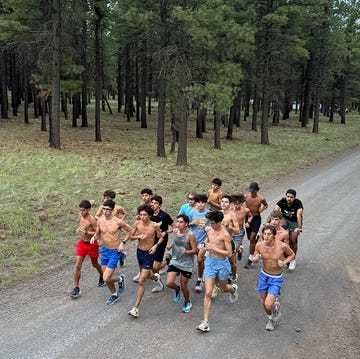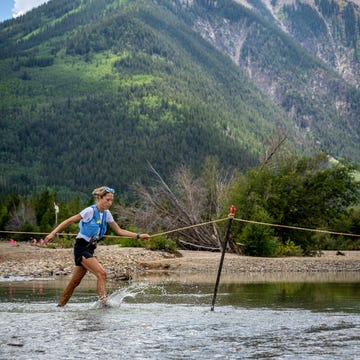Kerri Yare was running along Primrose Sands Beach in Tasmania—an island state off Australia’s southeastern coast—when she made a fascinating and unexpected wildlife discovery. She noticed a very strange looking sea creature washed up on the beach. It had a pale white body covered in dark red spots and coated in sand. Its orange fins resembled webbed duck feet. After sharing her discovery, the runner learned that it was considered locally extinct.
The fish was dead when Yare came across it and measured about 3 to 4 inches long. A press release from the Commonwealth Scientific and Industrial Research Organisation (CSIRO), an Australian government agency, identified the “strange and wonderful fish” as the critically endangered spotted handfish.
It’s the sort of primordial looking creature you have to see to believe. According to the Handfish Conservation Project, there are 14 known species of the unique anglerfish. They are exclusively found around southern Australia, and perhaps most notably, they get around by walking on their hand-like fins.
“If you’ve never seen a handfish before, imagine dipping a toad in some brightly colored paint, telling it a sad story, and forcing it to wear gloves two sizes too big,” the organization said.
Spotted handfish once had a thriving population along Tasmania’s east coast, but over the last 30 years, their numbers have dwindled due to dredge fisheries and the invasive North Pacific seastar. The sea stars prey on the fish’s eggs as well as the sea tulips that they use to spawn. The CSIRO statement said that spotted handfish are also “rare and elusive,” and because of their size and solitary lifestyles, they’re very difficult to spot.
Thanks to Yare’s observational skills while on the run, CSIRO researchers are back on the spotted handfish case. Carlie Devine, a researcher with the organization said, “Up until last weekend’s find, we thought this spotted handfish population at Primrose Sands was locally extinct, and that it had been since before 2005.” They looked again a few years ago but weren’t able to locate a single spotted handfish. Now she says, “This gives us cause to go looking again.”
Usually runners are encouraged to pay attention to their surroundings for safety reasons, but it’s also useful to keep your eyes peeled to the wonders of the world, because you never know when you’re gonna come across something like this weird and wonderful blob creature.

Abby Carney is a writer and journalist in New York. A former D1 college runner and current amateur track athlete, she's written about culture and characters in running and outdoor sports for Runner's World, Like the Wind Magazine, The New York Times, and other outlets. She also writes about things that have nothing to do with running, and was previously the editor of a food magazine.













